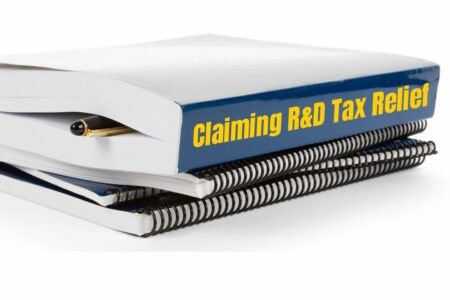- The Merged Scheme: Similar to the existing RDEC Scheme with some changes, it offers a net taxable benefit of about 16%.
- The Enhanced R&D Intensive Support (ERIS) Scheme: This is for loss-making SMEs that meet specific conditions. It provides an 86% enhancement to qualifying expenditure and allowing losses to be surrendered for a 14.5% credit. This results in a net credit of approximately 27%.
Which companies qualify for ERIS?
The ERIS Scheme combines elements of the old SME Scheme and the new Merged Scheme. It mirrors the SME Scheme’s method of applying the tax benefit but with some notable differences. For instance, to qualify, a company must be loss-making before calculating any R&D additional deduction. This differs from the old SME Scheme where the enhanced credit could be claimed if the company was loss-making after the additional deduction.
Another significant change is the requirements for meeting the “R&D Intensive” condition. Now, 30% or more of total relevant expenditure must be R&D related, a reduction from the previous 40% under the old SME Scheme. The Finance Act 2024 provides definitions and further details for “Relevant R&D Expenditure” and “Total Relevant Expenditure”, which can help clear up ambiguities between these seemingly similar phrases. The calculation can be complex, especially for groups with connected overseas parties.
There’s also a year’s grace period. A company that meets the R&D Intensity threshold for one year will still qualify for the ERIS scheme for the subsequent accounting period even if its R&D intensity drops. This can be either for expenditure incurred on or after 1 April 2023, or for accounting periods starting on or after 1 April 2024. For the grace period to apply, the company still needs to meet the loss-making condition.
When NOT to use the ERIS scheme
To fully benefit from the ERIS Scheme, a company’s losses must at least match its qualifying R&D expenditure, enabling maximum surrenderable losses. Consequently, the ERIS Scheme may not always be the best option. For example, a company with a nominal £1 loss would only be able to surrender the 86% enhancement for a 14.5% credit, providing a tax benefit of around 12.5%. That’s less than the 16% available through the Merged Scheme, so companies with relatively small losses should always carefully consider which scheme yields the best result.
Changes to qualifying expenditure
ERIS also introduces new rules about what expenditure is eligible for the enhanced 14.5% credit. Companies can claim for grant-funded and subsidized expenditure, which simplifies the process compared to the old SME rules.
Similar to the SME Scheme, payments to subcontractors can be included under the ERIS Scheme if they’re for activities that are part of the claimant company’s R&D. However, there is a crucial distinction that applies to both the ERIS and Merged Schemes. The claiming company must demonstrate that it ‘intended or contemplated’ to undertake the R&D for tax purposes, as opposed to this decision being taken by the subcontractor. This implies that companies contracting out R&D must involve a competent professional to confirm that R&D is required before drafting any contracts.
Related: Intent – When can subcontracted activities be included in an R&D claim?
Overseas Expenditure Restrictions
Under both the ERIS and Merged Schemes, there are restrictions on overseas expenditure. These include subcontractors undertaking R&D activities overseas and externally provided workers that are not subject to PAYE and NIC. This is a significant shift from the old SME Scheme and will have a significant impact on UK companies that form part of multinational groups.
There are some exemptions to these restrictions. Firstly, the rules don’t apply to companies with registered offices in Northern Ireland, where the restrictions are lifted but a cap on benefits claimed through the ERIS scheme applies. Additionally, UK companies are exempt from these restrictions if they prove that the necessary R&D conditions are present only overseas and replicating them in the UK would be unreasonable. These conditions include geographical, environmental, social, or legal factors but exclude reasons related to cost or workforce availability.
Where to learn more about the ERIS scheme?
Handling the ERIS scheme can be tricky, especially when dealing with overseas expenditure and contracted-out R&D. That being said, the scheme holds lots of new opportunities, and it’ll be interesting to see how HMRC enforces these rules in practice.
If you want to dive deeper into the new rules, we cover the ERIS scheme in depth in our training academy. You can join as a member to get full access to all our courses and recorded webinars.
For a more general idea of the changes, our free course on The Merged R&D scheme is a good starting point. The Merged Scheme has many similarities to the ERIS Scheme, so it’s a great way to quickly get acquainted with some of the major differences to the old RDEC and SME schemes.





